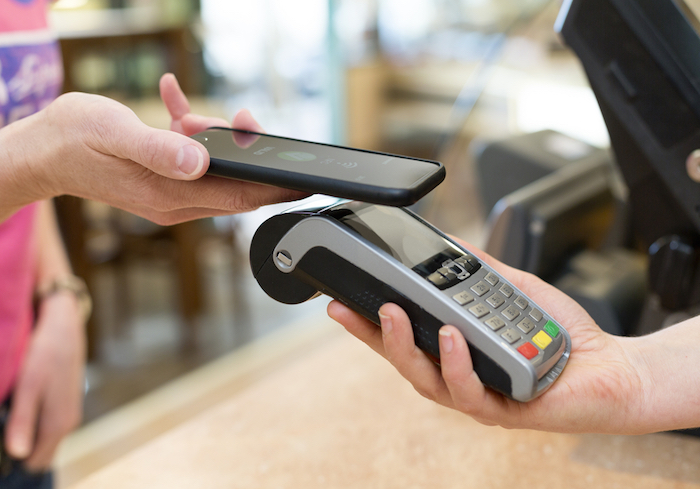
As mobile wallets gain acceptance among consumers, so too will digital payments. PPRO’s CEO, Simon Black, says that means that the 3,000-year-old payments method may disappear a lot sooner than one might think.
As Apple Pay and other contactless payments platforms gain exposure and acceptance among consumers globally, one wonders just where cash is headed – perhaps out of the wallet and into the dustbin? PYMNTS had a chance to catch up with Simon Black, who serves as the chief executive officer of PPRO, an electronics payments company based in the United Kingdom. Here’s what he had to say about the state of paper money and clanking coins – and in a nutshell, he says, their days are numbered.
The use of digital payments is slated to become ever entrenched in the payments landscape. The number of mobile wallets using contactless technology is estimated to be 200 million strong by the end of next year, according to Juniper Research. That begs a question, says Black, in terms of mobile payments. In other words, just how sticky will contactless get?
Black believes that contactless payments will indeed make inroads, so much so that within the next decade, smartphone-based virtual wallets will become the norm in payments.
“We are witnessing a payment revolution that will see the rapid uptake of emerging payment methods such as mobile wallets, virtual cards or biometric payments. The world of payments is transforming and very soon we won’t need to carry cash at all. In fact, I predict cash will become an obsolete payment method by 2025,” Black posits.
That bold prediction has at its base impressive growth rates that are already in place. Research firm Gartner has estimated that the worldwide mobile transaction arena – in terms of both transaction volumes and transaction value — will grow by as much as 35 percent annually through 2017.
Black’s contention that contactless represents “the missing link” to the further adoption of virtual wallets underpins further growth expectations. Consumers have become, and will continue to become, increasingly familiar and comfortable with the physical act of waving a card to make payments – and concurrently, waving a device such as a smartwatch or smartphone. The benefits of virtual wallets themselves become self-evident, explains Black, with speed and convenience among notable features, but also the fact that paper receipts are eliminated, and technology enables seamless record-keeping of spending and also loyalty rewards. In many cases, retailers are able to “recognize” frequent and loyal customers – and can make sure, in turn, that they get the offers and special activities applied to their accounts. One key catalyst, according to Black (and perhaps unsurprisingly?) is Apple.
“Consumers will use new products, technology or services quickly if they’re simple, intuitive and compelling, and Apple Pay is the likely catalyst towards a cashless society. This culture of convenience is a major driving force behind the cashless revolution. From using contactless cards to pay for a train journey, to a one-click shop on Amazon, quick and easy is driving the revolution forwards,” maintains the executive.
“It’s not that long ago that many people were concerned about shopping online due to credit card fraud and identity theft and now global eCommerce sales are predicted to top $1.7 trillion this year, according to Juniper Research,” Black adds. “The revolution will not only fundamentally change how we pay for things, but also how we interact with business, which will ultimately enable a new era of connected commerce.”
Of course, like Mark Twain, pundits have been predicting the death of cash for decades. The introduction of mag stripe cards prompted a wave of articles back in the 1960s declaring cash on life support, and at the turn of the 2000s with the emergence of online transacting, the same storyline emerged.
At least to this point, technology has simply made cash easier to access – ATMs made it easier for people to get at it and avoid standing in line at banks that were only open from 9 to 5, Mondays through Fridays. And, let’s not forget that cash in developing markets is how value is exchanged. Mobile phones might move information about funds availability and transfer, but it is a physical agent that hands over currency that enables that consumer to do business. In developed economies, cash is preferred by many people, still, given its tangible and transparent characteristics. And, as our study on cash usage shows, even if cash use declines, the growth of the population keeps cash alive.
All that said, the rapid diffusion of mobile devices and the confluence of apps that make it possible to transact digitally is accelerating the movement to a world where cash isn’t essential or even desired.
So the real question is whether cash, which has survived checks, mag stripe cards, contactless cards and even now, mobile payments, will survive another 3,000 years. Or the next 10.
Only time will tell.